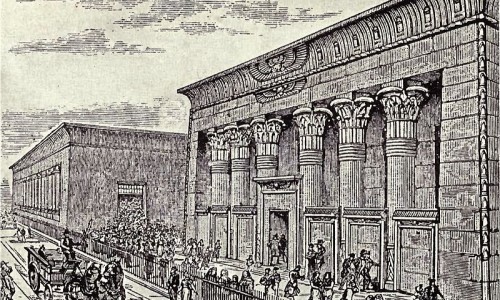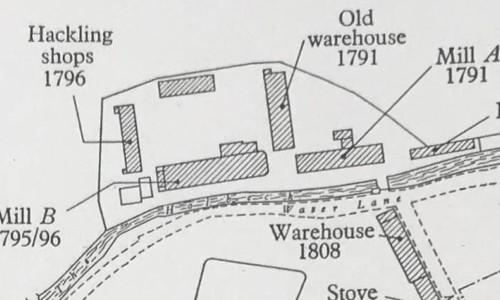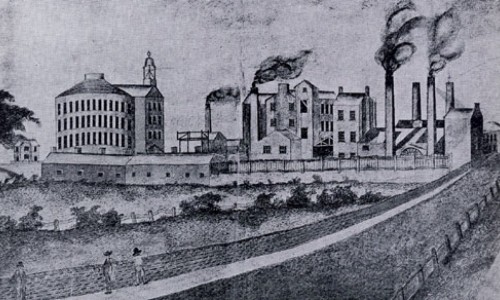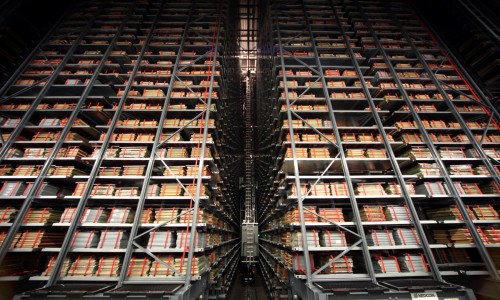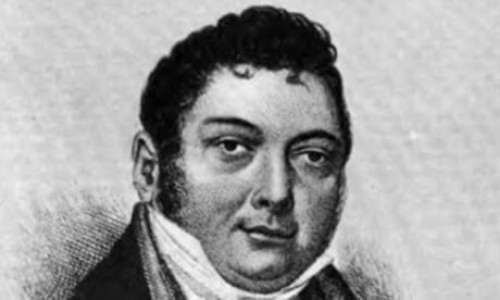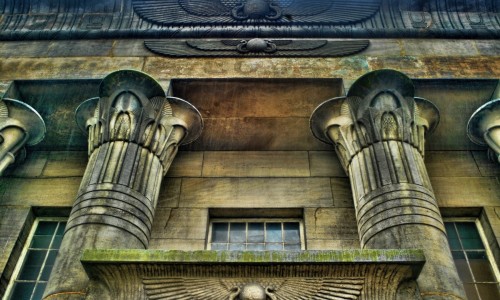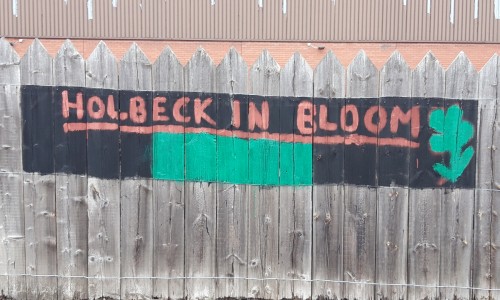A Leeds Revolution Again
March 11, 2020
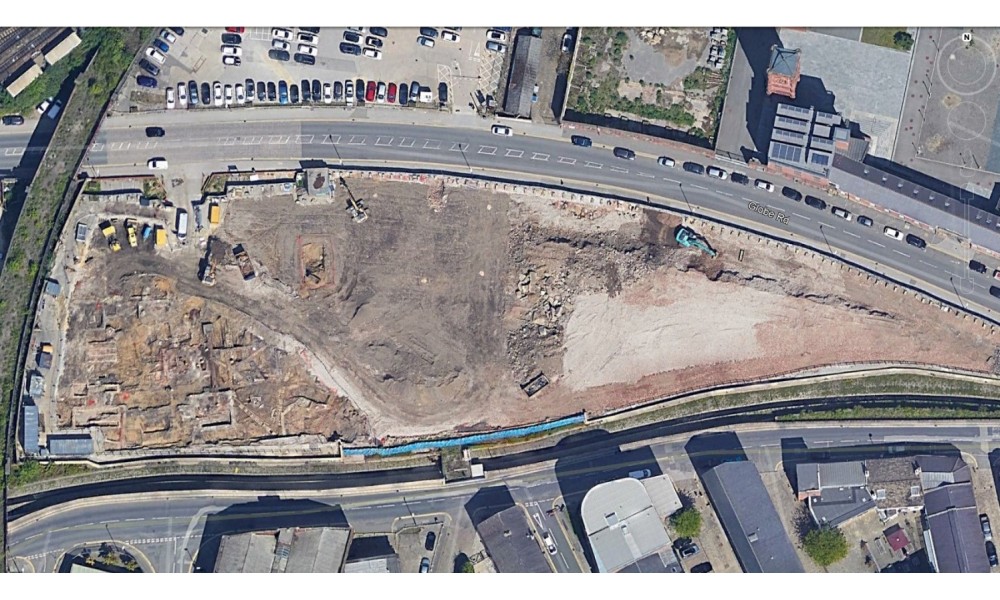
Before we start building again, we need to remember; remember where we came from and where we’d like to go. This charmed pasture between Water Lane and Globe Road was once a flat plot of land; a blank canvass of opportunity, just like it is now, and it is about to change again. But back then nobody knew what opportunity was.
There was no concealed history to this place, no excavation needed to discover the threads of what had happened here before, because nothing had happened here before. Just the earth slowly evolving. There were no road networks, no motorways and no railways, and not even any people living nearby. Just an empty, barren, uncultivated plot of land, a brand new canal, a beck and an opportunity.
Holbeck was a distant hamlet; more than just a stream in the hollow but already stigmatised by slum living and the bubonic plague. And it wasn’t near here, it wasn’t part of Leeds, it was just a small township peering towards a bigger township, like an envious duckling watching its family embarking on grown-up adventures while they had to stay at home. The only reasons to travel to Leeds were to buy textiles at the markets and cloth halls and to try and sell spa water; that most unlikely of Holbeck-grown commodities. How else could we earn money?

(Image Source: "Marshalls of Leeds Flax Spinners 1788-1886" by W. G. Rimmer - the early 19th century layout of the Globe Point site)
We were all entrepreneurs I guess, but not how you might imagine some cocksure and cavalier wheeler dealers of today. We were all scratching around in the dirt, trying to create income, trying to learn a trade, trying to find something that had value. Cottage industries made the best of what meagre gruel Leeds had to offer us, and our children had to muck in and help out. I suppose we were all waiting for an opportunity. But when you’ve never been faced with an opportunity, you don’t know they exist, never mind what they look like. You just survive day-to-day and you’re thankful for that. What else is there to aspire to? We lived in a black and white world, where the insufferable turning of the clock only offered a daily struggle to survive. But whatever the downsides were of the industrial revolution, thank God that someone knew what an opportunity was, and thank God that the opportunity came.
John Marshall knew what opportunity was, and so did Matthew Murray. From somewhere they had an idea to build a vision of hope on that piece of land, and they worked out why it was a particularly useful piece of land, and they knew that there were people who would travel there to work. They worked out that they could make something people wanted and would pay good money for, and in the end, everybody would win. It sounded simple - as the best ideas often are - but none of us had thought of doing it. But then John Marshall had the knowledge, the brains, the vision and the motivation, he knew people who could help him raise the money, and he saw an opportunity that we couldn’t see.
The buildings he constructed on this first, primitive patch of land next to Hol Beck didn’t have any architectural merit, they were merely buildings of purpose. This was the late 18th century and it was no time for extravagance or decoration. And even if it was, who had the skills or the money? No, these buildings were functional, all cobble stones, open-plan workshops, clay pipework and bricks. There was fume, dust, steam, oil and effluent. There was grit and resolve. Those buildings housed toil not dreams and they powered the wheels of industry not the flights of ambition.

We all got work here and it changed our lives. Our children worked here too, and some of us earned our way up the ladder; given responsibilities and respect. They were long days, especially in winter. But we were grateful. We didn’t really notice that some of the processes were dangerous, or that our hearing was being damaged by the relentless clattering of the machinery morning, noon and night, or that we were coughing up dust when we got home, instead of sleeping. We didn’t realise we were being exploited by low pay and long hours. We just saw an opportunity. We just loved honest work, earning some money and being able to support our families. We loved getting up and going to work and having a purpose and some self-worth. It gave us food and clothes and we were happy. We didn’t need anything else, we didn’t need material goods or recreation time. Life was dealing us a good hand at last, and we were greeted with smiles every day; smiles that said ‘I have a home, and a family and we can survive’. That’s all most of us ever wanted.
Holbeck changed as a result. More and more people came to live nearby because of the work that was available. People travelled to Holbeck from all over the country, specifically for the opportunities, and they took root here. Loads of people came from London, so they called the bit where they lived ‘Islington’ and named some of the streets after London areas, like Euston and Tilbury. Bigger neighbourhoods were built, churches sprung up and some people opened their own businesses to serve the local people. Pubs started appearing and there was a real community spirit. Before we knew it, Holbeck had got so big that it felt like part of Leeds. We would walk to work every day along the same route towards the ‘bright lights’ and cross that bridge over the beck with a relentless sense of routine, and it felt great to belong somewhere.
Some brought their children with them to work, others left them at home to roam the streets and get up to all sorts. Eventually, John Marshall built a mill school for the young workers to go to, so they could learn as well as earn money for their parents. It was amazing. We wished we had had that opportunity when we were dragged up, but we were just grateful that now we had learnt a trade and had been offered a way to better ourselves, as long as we kept our heads down and grafted.
Unfortunately, we didn’t see it at the time, but this prosperity brought its own problems. John Marshall’s business was exporting linen yarn all over the world, so he needed more raw materials to come in down the canal or on the new railway system, and he needed more space to store it, and he needed more mills to make more product. His buildings expanded south of Water Lane and by now they’d even named a new road after him; Marshall Street. His success had triggered vast change in the area, and numerous other industrialists were inspired by his idea, and they built other mills and foundries in Holbeck and mechanised formerly primitive processes on a huge scale.
They called it the industrial revolution. Not everyone liked it and there were Luddite riots because some trades and small businesses were lost to the might of the manor-dwelling fat cats like John Marshall. He didn’t live near us, he lived somewhere in the countryside and, to some people, he just came in to collect his money and order us about, and then he left again. He had no connection to Leeds anymore.
By this time, Holbeck was over-crowded and we didn’t have the infrastructure to deal with waste. The streets were riddled with rats and everyone’s rubbish and we had cholera epidemics; people died because of it. The paid work was still great, but Holbeck had outgrown itself and it couldn’t cope any more. And all these dark, satanic mills were now pumping out more filth, all the new buildings and houses that had sprung up were blackened by discharge and lurched over us menacingly. Every day felt like it never got light, we just lived a monochrome existence amidst clouds of smog. Leeds had become a shadowy, demonic landscape, besmirched by the infernal emissions of developing too fast. This was progress, but at a price.
The Marshalls built Temple Mill and it was a peculiar looking thing. It was just another place to work I guess, but it was like nothing we’d seen before, like it belonged somewhere else; a rose amongst thorns, or a stranger in a foreign city. People said they’d tried to build a palace, because that’s where the Marshalls lived now. We just got on with it and carried on working as before, and it didn’t really matter in the end anyway, because the wheels of industry soon stopped, the revolution was over and it was like the sun came out from behind the clouds. The Marshalls sold up and moved out of Leeds, but it didn’t feel like the end.

(Temple Mill - Marshall Street)
We’d enjoyed some happy years working in Marshall’s Mills, before the grind became too much and before we realised that where we were living wasn’t the palatial habitat we originally thought it was. When you’ve got nothing you are grateful for what you can get, but then everyone evolves and standards and outlooks change, and suddenly we expected better and deserved better.
But I’ll always be grateful to John Marshall. He gave me a reason to get out of bed in a morning. He made sure I had a bed in the first place. He looked after me, I worked hard and he rewarded me. He looked after my health and put systems in place where my colleagues and I had a voice and some rights, and a place where we could be together and form bonds. None of my friends who lived near me had that where they worked. It all got a bit out of hand in the end and I didn’t enjoy it as much, but that’s life.
John Marshall made Leeds. And Leeds is a city now, not a town surrounded by disconnected satellite colonies. It’s a roaring city and a roaring success. And I look out at this part of the city now and I can still picture what it was like before he came, even though the only constants between then and now are the beck and the canal. Imagine one of those fancy time-lapse videos showing the developments between then and now? Imagine the changes you’d see, the stories you could tell, the evolution and revolution you would witness?
Marshall’s business disappeared abruptly, but by then we were able to fend for ourselves. Leeds had banks, shops, churches, schools, pubs, lots of pubs. It had legal, civic and financial structure, it had doctors and hospitals, welfare systems, sports clubs and pitches, open spaces where the kids could play and most of all it had people, communities and spirit. Marshall exported Leeds to the world and in return he left us a city where everyone had an opportunity, everyone had a capacity for self-growth and self-sufficiency. We still had to earn our opportunities, we still had to toil, but we had clarity and coherent pathways, we could see where we needed to go. It wasn’t all mills, factories and foundries now because life had moved on; new money, new trades, new commodities. Everyone supported each other, because everyone needed each other. Money was passed around between sectors and institutions, because that’s how big cities work, they’re not just reliant on one industry, or one person, or one community, they are largely autonomous, sustainable and self-supporting. And that’s what Leeds was now. But it wasn’t insular and evasive, it was open-hearted and open-minded. Leeds welcomed the world.
I don’t know if John Marshall saw all that when he built his Mill A and Mill B just off Water Lane in the 1790s, but it has all happened because of him, and nowhere in Leeds is 21st century progress more evident than in Holbeck. In many ways, Holbeck isn’t much different; the same streets and some of the same buildings still exist, even that peculiar old Temple. People are fascinated by these old, industrial buildings, and as time passes, I can understand why. They’ve faithfully restored or re-purposed some of them, to make breweries, restaurants, offices, gyms, galleries and studios, allsorts. The place has come alive again, it’s magical.


(Image credits: CEG - Globe Point and Globe Square to be built on the land orignally occupied by Marshall's Mills A & B)
And now I can see a vibrant spirit that reminds me of that heady time when I’d just found work in Mill A, when I was young, wide-eyed and obliging and when everything felt new and exciting. There are innovative, independent businesses working hard and getting their reward, bringing money, people and vitality to the area. There are good people collaborating and bringing ideas, creativity and hard work, which attracts more businesses, more people and more ideas.
Okay, there is land that could have a better use, there are buildings that don’t look too pretty and need to be knocked down to start again, there are barriers to cross and routes and roads that need to connect, there are more community assets required and there are people that still need help, motivation and a purpose. Holbeck still wears a cloak of darkness to some extent, but it is nothing like what I saw in the 19th century. It’s not a cloak of smog and disease and primal living conditions, it’s a cloak of misinformation, self-doubt and inhibition, and living in an area that people have been given the wrong impression of.
Holbeck isn’t a blank canvas of opportunity anymore, now you can do much more because you are just fine tuning what’s already there. Once upon a time there was an industrial revolution here, now there is about to be a Leeds Revolution; but not an uprising of discontented people, instead a dramatic change in how people think and behave, a transformative difference in outlook; how people see their home, their surroundings and their prospects.
There is already so much that is good about this place, and that’s why the wholesale change that we saw with the industrial revolution isn’t needed anymore, and why progress won’t come too fast this time around, nor at a cost. Holbeck won’t eat itself for a second time, because there’s too much good in it. And before we start building again, we need to remember that.
(Header image photo credit: Google Earth)

.jpg&w=500&h=300)
